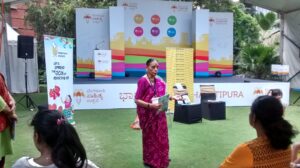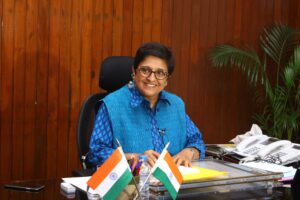 Sangeeta Sambhi, Keekli Intern
Sangeeta Sambhi, Keekli Intern
India has always been known for its culture, rituals and traditions. If we see it through an inductive approach, it would simply mean a cherishable experience of sanskar (culture) and riti-rivaz (rituals and traditions). But how these cultures and traditions came into practice, is something, which gets more questioned in contemporary times, when compared in retrospect.
Practices that shape our well-being today, were arrears of unprecedented adaption of multiple cultures, during the Vedic period. Acquiescent, its prolonged use, with modified policies is, encountered by, many men and women meticulously following the iambic pentameter. What could be your first few thoughts, when you think of marriage? A beautiful experience for few, an occasion to be registered, scribbling signs of blood relations, for many.
Unfolding the layers of this experience turned ritual, let us date back to the Vedic times (1750-500 BCE). While the Indo-Aryans settled into Northern India, Islamism started influencing swathe. Idealistically, its influence on marriage was stentorian. In the Indian culture, ‘grihastha’, was the term used for an independent experience of likelihood between two independent genders, i.e., male and female. It was termed so to give an experience of householders to both the parties. Whereas now, it is an exchange happening between families, religions and communities. Back then, it was only as personal, as it is not now. The duties allotted or taken up, were equivalent, re-affirming the independence of the two people involved. Where a woman was not plonked for going on hunts and accumulating necessities for the home. Likewise, a man was even-kneeled to contribute to all the household chores. Together, they had a common experience of livelihood, sharing good and bad times, wealth, seasons, food, shelter and prosperity, equally. Also, free from the prejudices of dependency.
This would make you wonder, how the contemporary concept of a woman being dependent on a man, came into existence. Well, for this, we shall dig deep into India’s religious history. In 100 CE, a manuscript, written by a sage, attributed to the legendary first man and law-giver, Manu, was marked as the first-ever ancient legal text, with constitutional relevance. It was denoted as Manu Smriti and introduced the concept of dependency. It supplanted independence, completely changing the trajectory of the pre-established pretence. Gestalt, its practice became more common, chronicle and domineering. Thereafter, rituals like ‘Kanyadaan’ (donation of a girl to her husband), spiked up, contemptuously, exemplifying a woman as an object.
It is normal, rather obvious for any piece of information to filter down to concoction. Not to mention, the history of women in marriages has seen a gargantuan amount of change in the pattern of their lifestyle. Innocuously, a woman’s role is pre-defined as a child, to grow up, only to be dependent on her parents as a teenager, on her husband, as an adult, and on her children, when aged. This not only tautologically finagled their independence but also feigned their career choices. Women are mostly restricted to employment opportunities indicating low risk and better sophistication. The concept of dependency, as an aftermath, also gave rise to a new assumption of women being weak, hence making them a victim of crimes of diverse genres. Not all, but most of the women are gyrating in the web of guilt, dependency, lack of education and awareness, ill-treatment, child marriages and rape.
Albeit, traces of women taking up strong career choices has risen in the past few decades. But women have been seen, fighting for cerebral opportunities for the longest time. They have been fighting for equality, which is normality, undefined.
Three influential, designated married women, with steel will, achieving pie-in-the-sky goals, include, Justice Leila Seth, who married at a young age of 20, having three children. But nothing stopped her from becoming the first woman Chief Justice of Delhi High Court. She led on to be the first lady lawyer, designated as senior counsel, by the Supreme Court of India. She believed, “She consciously never took on matrimonial and custody cases as these were regarded fit only for women lawyers.”
 Highly influential woman, Dr. Kiran Bedi, 24th Lt Governor, Puducherry, married at the age of 23, but with her clear vision, she became the first woman to join officer rank of IPS (Indian Police Services). She was also a social activist and tennis player. Her thoughts were, “Empowered women who reach tough or unconventional positions, make choices, not sacrifices.”
Highly influential woman, Dr. Kiran Bedi, 24th Lt Governor, Puducherry, married at the age of 23, but with her clear vision, she became the first woman to join officer rank of IPS (Indian Police Services). She was also a social activist and tennis player. Her thoughts were, “Empowered women who reach tough or unconventional positions, make choices, not sacrifices.”
 Business tycoon, Kiran Mazumdar-Shaw, known as the Indian billionaire entrepreneur, is the executive chairperson and founder of Biocon and Biocon Biologics Limited, Bengaluru based company. She is also the former chairperson of the Indian Institute of Management (IIM), Bengaluru. According to her, “When she started Biocon as a company, her main objective was to create a company for women scientists, to pursue a vocation.”
Business tycoon, Kiran Mazumdar-Shaw, known as the Indian billionaire entrepreneur, is the executive chairperson and founder of Biocon and Biocon Biologics Limited, Bengaluru based company. She is also the former chairperson of the Indian Institute of Management (IIM), Bengaluru. According to her, “When she started Biocon as a company, her main objective was to create a company for women scientists, to pursue a vocation.”
These women, from the 21st century, belonging to the dynamism of bureaucracy, law and business, have proven that dependency, is never an option. And income generation, is not the responsibility of only one gender. Oftentimes, we only have a female-based opinion of marriages, equality of power and household roles. Not to mention, with the sacrifices, determination and grit of many women and their stories, untold, a revolution has been brought in a way, men perceive the idea of equality, today.
Quoting the thoughts of a very famous and reputed Indian Bollywood actor, Pankaj Tripathi, “Borrowing money and expecting financial support from your wife, is normal and not a big deal.” While he continues to be one such example, of the millions, who form a part of this revolution being brought about, there are many stories, still to be explored, discovered and told.
History of marriages has seen measurable changes over the decades, having both positive and negative lapse of happenstance. However, with incremented literacy levels and awareness, the revolution still has a long way to go, to celebrate the experience of togetherness, and not restrict to the biases of gender specific roles.


amazing article, never have I ever read a better balance of emotion and information. congratulations to the author and the keekli team.
Thank you